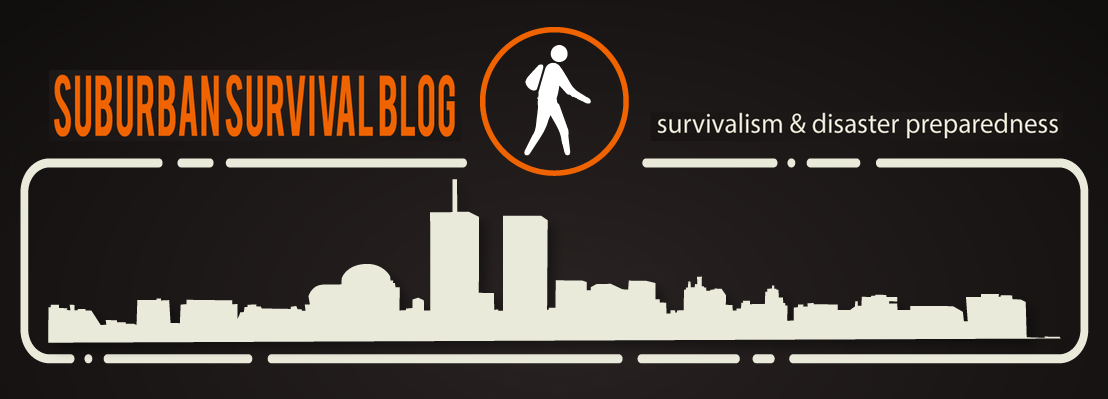A couple of years ago, I bought my then 4‑year-old a couple of walkie-talkies for toddlers… The usage concept didn’t take. Last week, I put a Baofeng UV-5R in her hands that was tuned for an FRS channel. She immediately grasped the concept and asked me what my secret code name was. Her’s in case you were wondering, is “Unicorn Blastoff.” Which I think is likely a first-time secret call sign use…
I immediately recognized this was a SHTF skill training she could now participate in. How excited am I you ask? Well, without making the video of me jumping up and down in excitement, I’ll leave you with that and your imagination. LOL. Additionally, it spawned the concept for this blog post which I hope you think makes sense. Teaching her how to communicate from a distance, articulate what she needs to convey, and allow her to do it autonomously was pretty cool… And away we go…
The Benefits of Playing with Walkie-Talkies with Your Kids from a Preparedness Perspective
Integrating walkie-talkies into playtime with your children isn’t just about reliving a piece of nostalgic technology; it’s a strategic move toward fostering a culture of preparedness and safety within the family. These compact, easy-to-use devices can be powerful tools in teaching kids essential life skills, crucial for emergencies and everyday communication.
Firstly, walkie-talkies can introduce children to the basics of effective communication. I immediately noticed my daughter’s thoughts and communications with me were shorter and more concise. I feel that children can learn to effectively convey messages clearly and listen attentively for updates. These are skills that are invaluable during emergencies when every word counts. This practice in brevity and clarity can significantly impact their ability to communicate in all aspects of life, not just a SHTF situation.
As we continued to play with them, she seemed to listen more attentively, and took direction the first time, with less hesitation, as well as more precise execution. I know that may sound weird, but I feel that the use of walkie-talkies can significantly enhance a child’s spatial awareness and understanding of directions after this exercise. Through fun and engaging, she was almost immediately more attuned to her listening environment, waiting for me to update her, and in turn, she was learning to navigate the Baofeng, asking me usage questions via the wireless comms, as she became more familiar and comfortable with the platform. I feel like this awareness is critical not only for personal safety but also for developing a keen sense of orientation going forward. We’ll continue this training for sure.
I think this also can encourage teamwork and leadership among younger kids.… Since she has taken on the role of “Unicorn Blastoff” I am going to assign her roles during play, such as team leader or team look-out, to potentially mirror real-life scenarios, teaching her the importance of collaboration, quick decision-making, and the responsibility of helping herself or her family.
In essence, I think this is going to serve as an enjoyable and educational tool, preparing her for unforeseen situations with more confidence. By incorporating a walkie-talkie or the Baofengs into family activities, I hope to equip their equip her with vital communication, leadership, and navigational skills, all while creating fun experiences for us to remember as she gets older.
Understanding Walkie-Talkies & Communication Devices Like Them
Walkie-talkies, along with similar devices, like the Baofeng UV-5R, offer a fascinating glimpse into the world of wireless communication, serving as both educational tools and practical devices for everyday use. I remember, as a kid playing with walkie-talkies, and found them fascinating. As we all know these devices operate on radio frequencies, allowing users to communicate over distances without the need for cellular data or Wi-Fi networks. The perfect alternative in a SHTF if the cellular network goes down and you have enough range to communicate with a loved one, friends, or your Mutual Assistance Group. This fundamental characteristic makes them invaluable in areas where traditional communication methods are unreliable or unavailable.
For children, walkie-talkies are more than just toys; they are an introduction to the principles of radio communication. By using these devices, kids can be taught and learn about the importance of clear frequencies, the concept of push-to-talk (PTT), and how to share a channel with multiple users, which is of course its own etiquette. This hands-on experience with radio devices can spark an interest in science and technology, laying the groundwork for future learning in these fields. Not that that is what I am going for here, but could act as a bonus if that is the direction she wants to go. She’s 7, and I know I am getting ahead of myself, but hey, I’m a hopeful Dad…
Moreover, walkie-talkies and similar devices like CB radios or even amateur (ham), introduce users to the concept of communication etiquette. Children learn to wait their turn to speak, use clear and concise language, and understand the importance of listening when others are talking. These skills are transferable to many areas of life, including effective use of digital communication platforms like Zoom, Google Meet, etc.
In addition to walkie-talkies, there are other simple communication devices that operate on similar principles, such as two-way radios with more advanced features like privacy codes and longer-range capabilities. These devices can offer a deeper understanding of radio communication and are an excellent way for families to stay connected during outdoor adventures, community events, or in emergency situations. We’ll explore this as she gets older if she continues to have interest. Albeit, I am convinced I can have her at a basic proficiency level soon.
Enhancing Communication Skills
These devices necessitate the use of clear, concise language, as the medium does not allow for the visual cues and body language present in face-to-face conversations. This limitation challenges children to express their thoughts and needs more effectively, fostering a skill set that is crucial for both everyday interactions and emergency situations.
Moreover, the push-to-talk mechanism of walkie-talkies teaches children the importance of taking turns in conversation, which has been a challenge in the parent-child negotiation process. Unicorn Blastoff seems to listen more attentively when it’s another person’s turn to speak, with the assumption that there is an understanding that communication is as much about listening as it is about talking. So, “I think” and I emphasize, “I think” the aspect of walkie-talkie use can significantly improve her active listening skills over time.
One thing I noticed, is that using walkie-talkies almost immediately introduced her to basic communication protocols, such as starting a transmission with a call sign such as “Unicorn Blastoff” or ending a message with “over” to signify that it’s the other person’s turn to speak. These protocols not only added an element of fun and realism to her play but also quickly instilled an understanding of structured communication, hopefully preparing her for more formal communication environments in the future.
Building Teamwork and Leadership Skills
I may be getting ahead of myself here, but… I think through playing walkie-talkie games with Unicorn Blastoff, she can learn the importance of working together and some leadership skills…. We’re going to work on this and I will report back with updates over time.
Thoughts on Teaching Direction and Spatial Awareness
So, I’m a first-time Dad of an only child. What I know about “dadding” can fill a thimble, because I am simply learning as I go.
First, let’s define spatial awareness for those unaware of the terminology. You could exchange is for situational awareness, but I think the first step is the realization of spatial awareness and then you can teach the situational awareness part later or as you go. Spatial awareness is like knowing where you are in a room and where everything else is too, for all intents and purposes. Sounds easy enough, but it is also being able to tell how far away things are, which way they’re facing, and how they fit together, kind of like when you’re child is learning from playing with building blocks. It helps you or them to move around without bumping into stuff, figure out puzzles, and understand how different things can fit together or how far you need to throw a ball to reach your Mom, Dad, or their friend. It’s important for doing well in school subjects like math and art, and for playing sports or games where they need to move and think about where things are at the same time. Or to oversimplify it; “be careful running around the room, I don’t want you to fall and crack your head on the coffee table. LOL.
That said, teaching direction and spatial awareness through the use of walkie-talkies offers a unique and engaging approach to learning that extends beyond traditional methods… This hands-on experience seems to encourage my daughter to interact with her environment in a more meaningful way, developing skills that are crucial for their overall growth and safety. She seems more descriptive when she is talking to me on the Baofeng, being more clear, and describing in better detail what she is doing or going to do.
So my hypothesis is that when (maybe not all but I suspect many or most) children are taught to use walkie-talkies to navigate to specific locations or coordinate movements with their counterparts, they are actively learning to understand and communicate about space and direction. I suspect, this process enhances their ability to visualize landmarks, comprehend geographic concepts, and apply these skills in real-world scenarios. For instance, I can see my daughter playing with a friend with a couple of walkie talkies to direct a friend to a hidden treasure for fun.
I’ll bet these activities can boost a kid’s confidence in their awareness and navigational skills. As they become more adept at using landmarks, directions, and distance estimations, dangers, etc, their sense of independence and self-reliance will grow. This confidence is invaluable, and exactly what I want for “Unicorn Blastoff” not only in outdoor adventures but also in everyday situations where orientation skills are needed in the future.
Forward looking, I think that incorporating walkie-talkies into spatial awareness and direction teaching will not only makes learning fun for her, but also will embed essential life skills in her.
Emergency Preparedness and Safety Skills
As you can imagine, this is where I was going when I handed her the Baofeng. I wanted her to get a feel for the platform, even if we only stayed on one channel. She caught on the PTT immediately and was actively engaged in two-way conversations. Which was awesome.
Starting to teach her about emergency preparedness and safety skills is crucial to me as her father, and radio communications can play a key role in this education. These devices offer a practical and interactive way to introduce her to the basics of emergency communication, helping her to understand how to stay connected in situations where traditional means might fail. Granted, she does not have a mobile phone, but I have been thinking about buying her a watch that can call Mom & Dad and has an SOS feature, as well as a GPS signal where you can track your kiddo whether in or not in an emergency situation. My fear is abuse of the call Mom & Dad feature…
What I noticed, is that when she was able to convey information quickly and clearly, and continued use and training could teach this as a vital skill during emergencies. For example, eventually, we will practice sending distress signals or communicating her location pretending to become separated from a group. This kind of role-playing not only makes the learning process engaging but also instills confidence in children, ensuring they know what to do in real-life scenarios.
They can also teach children about the importance of having a pre-determined meeting point and how to navigate their way to safety. Parents can create scenarios where children must use their devices to coordinate a rendezvous, reinforcing the concept of staying calm and collected under pressure. This is a little advanced for Unicorn Blastoff yet, but we will get there.
Incorporating walkie-talkies into emergency preparedness drills can also highlight the temporary nature of and the significance of battery life and device maintenance, to ensure the equipment is always ready for use. I think it is through these lessons, that children can not only become familiar with essential safety protocols but also develop a sense of responsibility and readiness that extends beyond playtime. Fingers crossed…
The use of the Baofengs in the home, also seems to serve as an excellent medium to introduce children to emergency protocols in a non-threatening way. Through play, they can learn how to communicate in various scenarios, such as getting separated from the group or navigating through a blackout.
Fun with Technology and Outdoor Adventures
Blending technology with outdoor exploration, walkie-talkies encourage children to embrace both the digital and natural worlds. This balance fosters a healthy relationship with technology while promoting physical activity and curiosity about the environment.
Practical Preparedness: Real-Life Applications
Beyond the playground, walkie-talkies have practical applications for families. They can be indispensable tools during camping trips, hikes, or any situation where cell service is unreliable, emphasizing the need for a solid communication backup plan.
Choosing the Right Walkie-Talkies
As mentioned, I bought a set of walkie talkies for my daughter a couple years ago. The concept didn’t stick then. They were not advanced, they were cute, but the concept of turning on the unit, navigating so say, channel 5, etc. was lost on her. Today, she’s a lot more aware, can take direction better, etc. And I happen to have a few Baeofeng’s floating around the house.
However, selecting the appropriate walkie-talkies for your family involves considering the age of your child or children, are you going to use them for play, training or both, factors like range, durability, and ease of use. Opting for models designed with kids in mind can ensure a positive and educational experience. I just happen to like the Baofengs because I have them, and feel like I can teach her to manually change a channel with the keypad at this juncture.
Conclusion
Integrating walkie-talkies into your family’s playtime is not just about fun; it’s a strategic approach to teaching vital life skills. From enhancing communication and leadership abilities to fostering a sense of adventure, these devices offer a unique blend of entertainment and education. As we’ve explored, the benefits extend far beyond the playground, preparing children for real-world challenges in a fun and engaging way.
Your Call to Action
Start simple: incorporate walkie-talkie activities into the end of your day while you are sitting in the home office or working in the garage or shop. Add them to your next family outing and hopefully see the immediate benefits in teamwork, communication, and enjoyment. Trust me, all she wants to do now is chat on the radio. LOL.
Moreover, take this opportunity to develop a family emergency communication plan, ensuring everyone knows how to stay in touch when it matters most.








